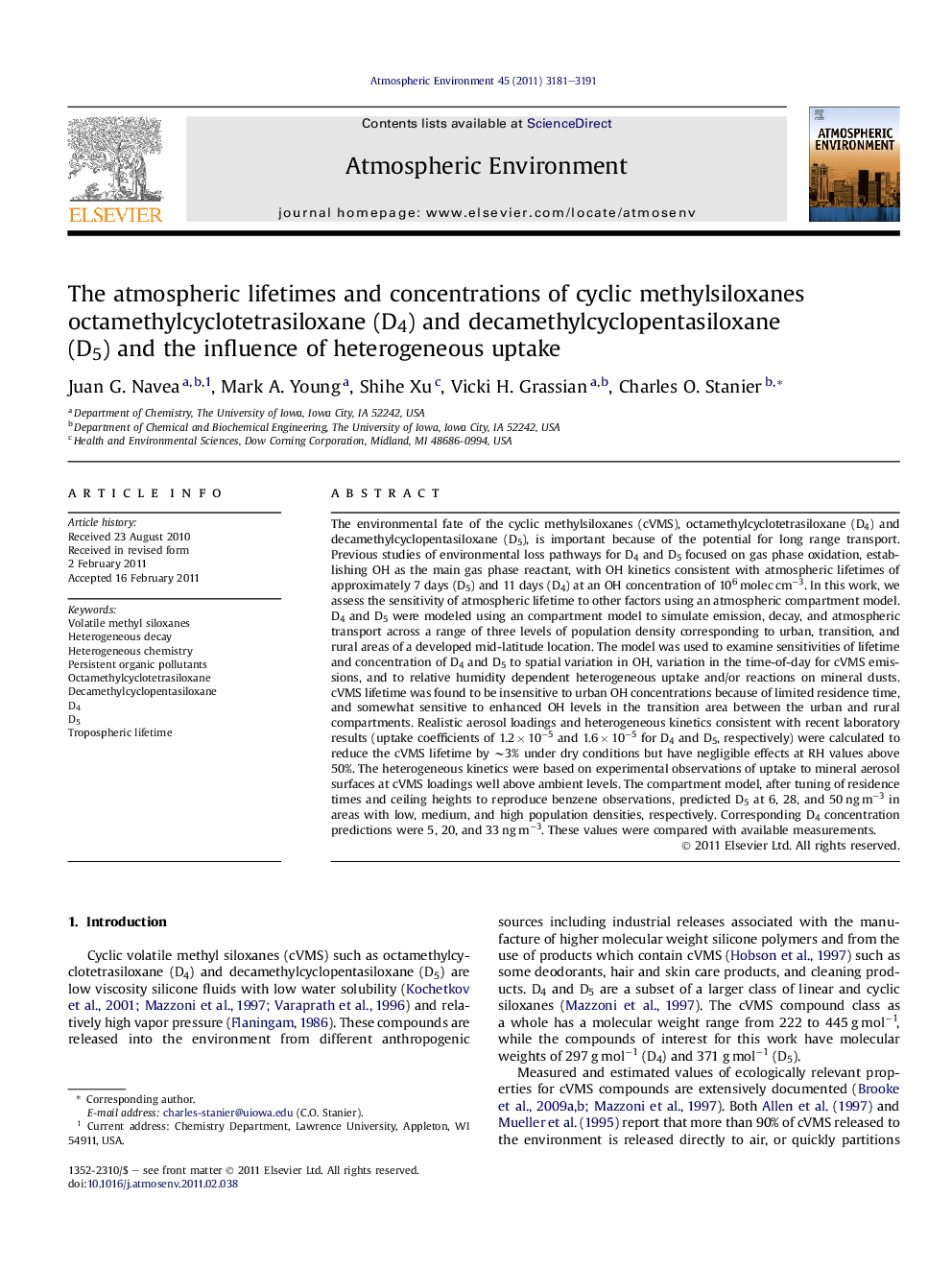| کد مقاله | کد نشریه | سال انتشار | مقاله انگلیسی | نسخه تمام متن |
|---|---|---|---|---|
| 4439801 | 1311033 | 2011 | 11 صفحه PDF | دانلود رایگان |

The environmental fate of the cyclic methylsiloxanes (cVMS), octamethylcyclotetrasiloxane (D4) and decamethylcyclopentasiloxane (D5), is important because of the potential for long range transport. Previous studies of environmental loss pathways for D4 and D5 focused on gas phase oxidation, establishing OH as the main gas phase reactant, with OH kinetics consistent with atmospheric lifetimes of approximately 7 days (D5) and 11 days (D4) at an OH concentration of 106 molec cm−3. In this work, we assess the sensitivity of atmospheric lifetime to other factors using an atmospheric compartment model. D4 and D5 were modeled using an compartment model to simulate emission, decay, and atmospheric transport across a range of three levels of population density corresponding to urban, transition, and rural areas of a developed mid-latitude location. The model was used to examine sensitivities of lifetime and concentration of D4 and D5 to spatial variation in OH, variation in the time-of-day for cVMS emissions, and to relative humidity dependent heterogeneous uptake and/or reactions on mineral dusts. cVMS lifetime was found to be insensitive to urban OH concentrations because of limited residence time, and somewhat sensitive to enhanced OH levels in the transition area between the urban and rural compartments. Realistic aerosol loadings and heterogeneous kinetics consistent with recent laboratory results (uptake coefficients of 1.2 × 10−5 and 1.6 × 10−5 for D4 and D5, respectively) were calculated to reduce the cVMS lifetime by ∼3% under dry conditions but have negligible effects at RH values above 50%. The heterogeneous kinetics were based on experimental observations of uptake to mineral aerosol surfaces at cVMS loadings well above ambient levels. The compartment model, after tuning of residence times and ceiling heights to reproduce benzene observations, predicted D5 at 6, 28, and 50 ng m−3 in areas with low, medium, and high population densities, respectively. Corresponding D4 concentration predictions were 5, 20, and 33 ng m−3. These values were compared with available measurements.
► Atmospheric fate of methylsiloxanes D4 and D5 is probed using a multiple box model.
► Parameterized heterogeneous reactions between cVMS and aerosols are modeled.
► Implication of aerosol reactions is minor compared to the dominant OH oxidation.
► Modeled cVMS concentrations range from 5–50 ng m−3 depending on population density.
Journal: Atmospheric Environment - Volume 45, Issue 18, June 2011, Pages 3181–3191